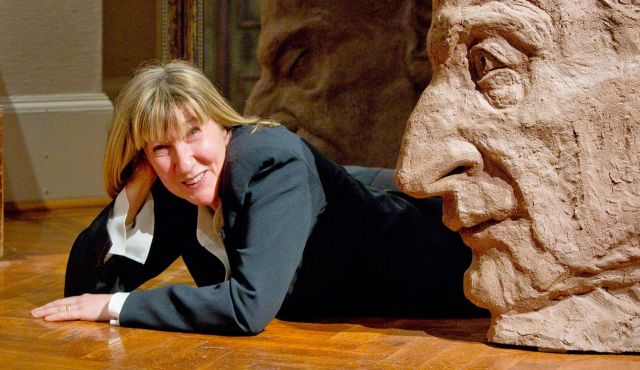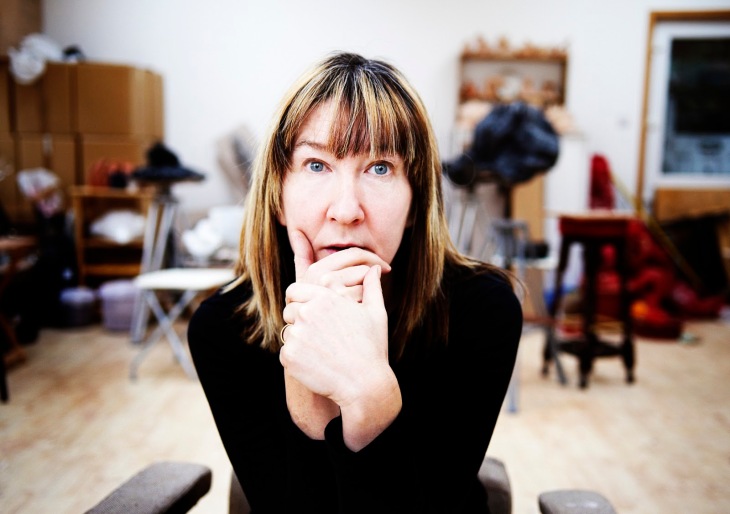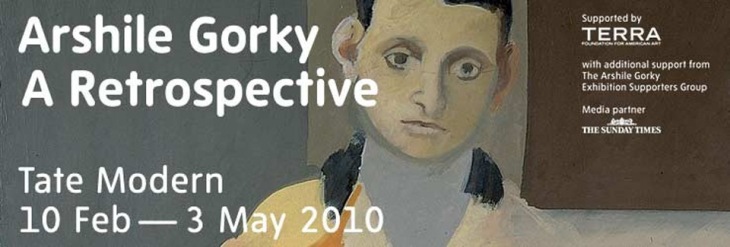
As the daughter of probably the most famous portrait painter of his generation, Jane McAdam Freud’s latest exhibition pays tribute to her beloved father, Lucian. “I am channelling my artistic heritage and focusing on familial relationships,“ admits the London-born sculptor. “It is part of a continuing theme I have been exploring about my family. It includes a very large bronze portrait of my half-sister Annabel and sculptures of my husband and children as well as work relating to my father.“
And with a strong artistic background – her mother Katherine McAdam was also an artist – and a mixture of religious influences being half Jewish and half Catholic, Jane is continually inspired by her experiences.
“Everything in this exhibition is about the internal struggle with who I am and what my family represents to me. Family memories of my childhood are defined with positive experiences to do with art. My mother kept all my sketches and books, which I still have, and my father, Lucien, gave me most attention as a child when I was drawing. I remember him watching me when I was sketching.
“I was also very close to both my paternal grandparents, Lucie and Ernst Freud,“ she adds. “They came to visit, wrote regularly and sent wonderful birthday gifts. For those formative early years they had an influence on my life and my aspirations. In fact, I’m sure that my paternal grandmother, Lucie, was much more of an influence on me than I realise. I think that I connected to my father indirectly, through Lucie, as much as directly with him.“
But her connection with art started early. “My first experience of being enchanted with the materials and tactility of sculpture was in the sandpit at nursery school,“ she recalls. “When I first put my hands through the water into the sand I felt transformed. I cannot put into words the way it made me feel, but I knew then that I wanted to do more.”
“Then when I was at primary school, I overheard the headmistress telling a visitor during an open-day about my ability in art. She showed her some drawings that I had done in an exercise book. Overhearing the awe with which this teacher spoke was incredibly bewitching and exciting. This, I think, sealed it for me about being an artist. And it instilled in me a certain confidence about my future as an artist.“
And although Jane’s mother and paternal grandparents influenced her most growing up, it was unequivocally the act of drawing her father as he lay on his deathbed that has inspired her forthcoming exhibition more than anything else. “That’s the last time that I saw my father,“ she admits.
“It was an extremely challenging experience but also most stimulating and very motivating. It means, meant, has been, and is, everything to me. I am highly influenced by my family and my family history, but also have something to say myself and I’m compelled to express it in an attempt to make sense of my life. Making art has given me breath – it is and has been a means of conveying my perceptions.“
“The other highlight of my exhibition is the large-scale relief of my late father, ‘EarthStone Triptych’, which is inspired by the sketches I made of him on his deathbed. It’s a memorial to his life and legacy.“
Her close-up pencil drawings look like sensitively observed donor drawings prepared for 15th century tombs, keeping his spirit alive. “Ashes to ashes, dust to dust…“ from Genesis, makes this sculpted portrait a wonderful ‘memento mori’. The process of mortality is not forgotten in the fact that clay – more than any other medium – is all about the manifestation of the four natural elements of antiquity – earth, water, air and fired combined to survive and stand along.
‘Earthstone Triptych’ is a complete installation – placed by a mirror enabling one to see both sides of the sculpture simultaneously; one side depicting “Lucien awake. His eyes wide open. The other, not“. Getting down low to view it, I’m reminded of Holbein’s anamorphic masterpiece, The Ambassadors, with the skull of mortality only visible when vying the artwork from certain angles. There’s also a plaque with her initials, ‘JMcAF’, on it: “this part of the sculpture“, she confides, “broke off being moved to the kiln for firing“, but it works as an effective persuasive symbol for many things, including separation.
Jane recalls her father leaving when she “was a child of eight years old, not seeing him again until I was 31, arriving back in London after studying sculpture at the Rome Academy of Fine Art.“
The rocky application of clay not only resembles him, but it is ‘of’ him, ahead of the Freudian psychological perspective that exists beyond philosophy; beyond science; beyond truth; beyond life after death (think of how flowers grow, even when beneath blankets of freezing snow).
Knowing how Freud ‘sculpted’ with paint, did he ask his daughter to teach him to sculpt? “My father did. Yes“, she says; she taught sculptural techniques during her time at the Royal Mint in South Wales. “And it shows in his painting techniques that he loved sculpture. That he was a fan of sculpture even though he was a painter! I’m sure he would have loved to have been a sculptor.“
©Estelle Lovatt FRSA




